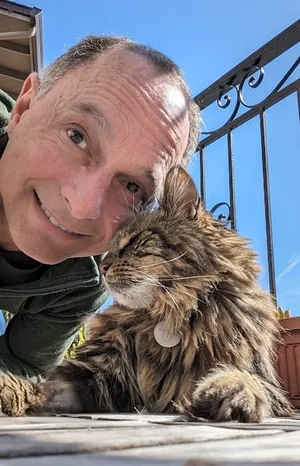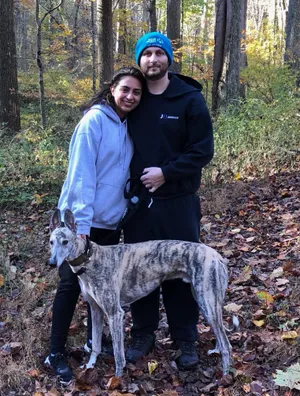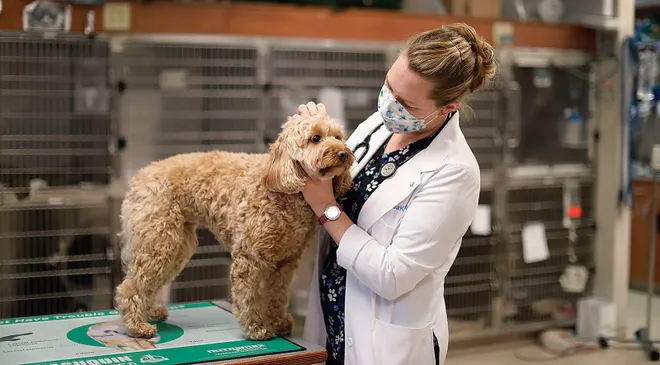A big pet peeve: Soaring costs of vet care bite into owners' budgets
SAN FRANCISCO – When one of the family's two cats suddenly stopped eating on a Thursday last month, Dave Lambert knew there was something wrong with 12-year-old Ender, a pet so perceptive as to recognize the sound of the Lamberts’ car and regularly greet them at the front door.
Dave and his wife, Rena, canceled a weekend trip to Denver for his mother’s 80th birthday and had Ender run through a series of tests, which determined he had cancer. By Sunday, when it became clear Ender couldn’t be saved, the veterinary bills had already added up to $6,500. An in-home euthanasia cost another $500.
Lambert, a finance professional in San Francisco, said he could tell there was an 80%-90% chance the quickly mounting charges wouldn’t result in keeping the cat alive but felt they had to do everything reasonably possible for such a beloved member of the family.
“The surprising thing for both Rena and I was we just had no idea how attached we were to him, how hard it hit us,’’ he said.
As Americans of all income levels care for their cherished animals, they’re facing bigger vet bills that can substantially impact their finances and sometimes complicate already wrenching decisions.
Veterinarians are reporting a marked increase over the last several years – especially since the pandemic – in the cost of running a practice, which inevitably gets passed along to clients.

According to the Bureau of Labor Statistics, the price of urban veterinarian services rose by 7.9% from February 2023 to February 2024, more than 2½ times higher than the average of all consumer items. Compared with two years ago, urban vet care is up 11%, and over the last decade it has soared by nearly 60%.
A survey by USA TODAY Blueprint earlier this year shows 91% of pet owners have endured some level of financial stress because of pet care costs. Last summer, a Forbes Advisor poll revealed 63% of dog and cat owners said inflation had made it harder to pay an unexpected vet expense, and 42% said they would go into debt if the bill was for $999 or less.
Pit bull attack leads to soaring surgery bills
Micah and Angie Cacopardo spent $17,000 on surgeries and other treatment for their greyhound, Lenny, after it was attacked by a pit bull two years ago at a dog park in Raleigh, North Carolina, leaving their then-3-year-old pet with a large gash and severely torn skin.
The sudden expenditure put a significant dent in the budget of the young couple, who were saving to have their first child.
“In the beginning it was, ‘Start swiping this Visa, we’ll figure it out later,’’’ said Micah, 33, a construction estimator for a home-damage restoration company. “There was literally no planning for it, which is the tricky part. If you knew six months beforehand, it would be a lot easier.’’
The Cacopardos got some help after setting up a GoFundMe page that brought in more than $4,000 in donations, but they were still left with a large debt and the feeling the veterinary industry “definitely had the knowledge to do better by the client,’’ he said.

'An out-of-pocket expense for most people'
The high price of services and medications can lead to sticker shock for the estimated 95% to 97% of owners whose pets are not covered by health insurance, which is not subsidized by employers, contrary to what’s typical with people.
“It’s less like human health care than it is like other service industries,’’ said Dr. David Lee, an associate dean and professor at Cornell University’s College of Veterinary Medicine. “It’s an out-of-pocket expense for most people.’’
Lee listed several reasons for the rising costs of veterinary care, among them a shortage of vets – some driven to retirement during the stressful pandemic years, others lured by specialty practices and emergency clinics – and a chronic dearth of technicians.
Increased demand from a surge of pandemic-era pet adoptions and a subsequent tight labor market that endures have pushed up labor costs, which Lee said can make up 60% of a practice’s expenses. Other factors at play include more expensive medications and technologically advanced diagnostic tests, along with increasing corporate consolidation and the growing presence in the industry of private equity firms.
About 25% of the nation’s 30,000 veterinary clinics are owned by large chains, and that percentage triples when it comes to pricier emergency and specialty clinics, The Associated Press reported. Independent vets worry a profit-focused approach may spike prices and worsen care.
“As investors want more and more returns, the easiest thing to do is to raise fees, which puts it back on the clients,’’ Lee said. “We’re very concerned that there could be as much as 35% of pet owners who will not have affordable access to veterinary care in just the next few years.’’

Some pet owners are delaying care
Dr. Link Welborn, owner of an independent network of eight pet hospitals in and around Tampa, Florida, said consolidation has led to more competition for veterinarians and technicians, “which has contributed to wage inflation and the associated increased costs for consumers.’’
He cites other rising expenses over the last four years, such as medical equipment and supplies, but they’re all secondary to paying more for labor. That makes for some difficult decisions for his clients.
“Unfortunately, higher costs reduce affordability,’’ Welborn said, “which causes some pet owners to delay care for their pets, particularly wellness care, or need a payment plan if their pet becomes ill.’’
Putting off preventive care, which often includes vaccinations, is exactly the opposite of what industry experts recommend for pet owners seeking to cut down on their vet bills, because those visits can uncover an issue that may be more expensive to treat later.

Pet insurance is an option for some
There are several other measures that can mitigate costs, such as using the drop-off option at pet hospitals that offer it or consulting with a triage service such as FirstVet, VetTriage or the Animal Humane Society's free Pet Helpline before taking a pet to an expensive emergency clinic.
The rising costs of care have also made buying pet insurance a more appealing alternative for some. Plans cost an average of $660 a year for dogs and about $560 for cats, and they vary depending on features.
Dr. Rena Carlson, president of the American Veterinary Medical Association, said her trade group encourages pet owners to consider insurance and plan for unexpected costs.
“Preventive care is key to finding things early and dealing with problems early,’’ she said, “before they become a really expensive emergency.’’
Disclaimer: The copyright of this article belongs to the original author. Reposting this article is solely for the purpose of information dissemination and does not constitute any investment advice. If there is any infringement, please contact us immediately. We will make corrections or deletions as necessary. Thank you.



